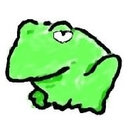Oxidative stress is involved in fatigue induced by overnight deskwork as assessed by increase in plasma tocopherylhydroqinone and hydroxycholesterol.
Mots clés
Abstrait
In this study, we examined the relationship between fatigue and plasma concentrations of antioxidants and lipid peroxidation products. Fourteen healthy volunteers performed overnight desk work for 18h then took a nap for 4h. Participants answered questionnaires of subjective symptoms of fatigue (QSSF) and completed a self-assessment of fatigue using a visual analog scale (VAS). At each test time, they underwent a critical flicker frequency (CFF) test and blood samples were collected. Plasma levels of α-tocopherol (αT) decreased and α-tocopherylquinone (αTQ), the oxidation product of αT, increased. The ratio of 7β-hydroxycholesterol (7β-OHCh), the oxidation product of cholesterol, against total cholesterol increased until the end of experiment. αTQ levels correlated with VAS and QSSF scores. The ratio of 7β-OHCh to total cholesterol and the value of CFF showed a significant correlation. From these results, plasma levels of αTQ and 7β-OHCh are useful and objective indicators of fatigue induced by overnight deskwork.



